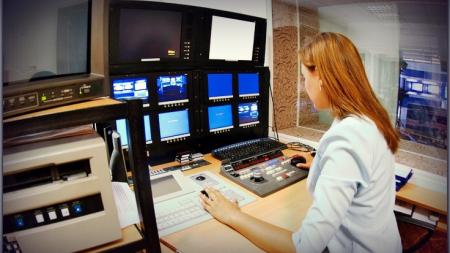
The importance of video editing cannot be understated. After editing that’s it - you have your final video like it or not. And, if viewers fail to respond well to it, chances are there could have been some editing issues that were overlooked.
It should come as no surprise to you that high quality editing can drastically change the overall outcome of a corporate marketing video. Your final cut should flow seamlessly, make complete sense to anyone viewing it, and be worth the cost of having a professional handle the editing process.
That said, as a corporate video editor having taken advanced video editing courses in Maryland, you should have very little issue with consistently turning out an amazing final product to your clients.
If every step of the production process was carefully planned out, your job as editor of the final video cut should not be that difficult. Script, location, proper filming techniques, and most of all, a complete vision from the beginning will all play a role in how much editing to your corporate video you will need to do.
Today, we look at the main stages that must be completed during the editing process so that when you begin your editing phase, you can have an easy sequence to follow.
Stage 1: Pre-Production Story Stage
This is the first step you will take in editing your client’s corporate video. You will complete tasks such as organizing and reviewing all footage, synchronizing audio with multiple camera shots, and mapping out each part of the project to later piece back together as a cohesive final product.
This stage can be looked at as the outline stage of the editing process, one you will have learned to do during your video editing courses.
The key here is to show your clients this raw footage. Though it is not perfect by any means, this will give your clients a basic idea of the direction the final cut is going in. Any major issues they have with the existing footage, audio, or lighting can be addressed early on. This saves you time in the long run. Rather than put all of your sweat and tears into a final cut, only to have the client make numerous changes, you can get their input from the beginning. Then, once everyone has agreed to the basic content and direction of the project, you can move on to the next steps in the video editing process.
It is suggested that as an editor, you should take an active role during the actual filming of a video. If you wait until all of the footage has been shot and handed over to you, there is a good chance you will be overwhelmed. Viewing footage as the production process rolls may give you a head start on post-production editing. Doing so will give you an overall feel for the video, spark editing ideas, and see where there are missing parts so the production team can capture all of the footage required to help the corporate video tell a complete story.
Stage 2: Rough Stage
Here is where you will really start to shine. In the rough stage, you start piecing together your outline from stage one and adding in your professional touch. The skills and expertise you gained during your Maryland video editing courseswill help you drastically set yourself apart from amateur video editors.
This is the stage where you make your decisions on which takes to use, how to piece them together, and how to get rid of awkward shots and blank spaces.
Typically, usable footage is kept and possibly trimmed for later use, while bad footage is completely taken out. It is almost like a game of Jenga. You must pull a piece here and keep a piece there, all while holding the entire video together as a whole. This is one of the most important elements to video editing and why video editing is so important. You don’t want the corporate video to appear choppy or confusing in the end.
As you move from one logical section to the next, again it is a smart move to get your client’s input.
This will ensure that the client is getting exactly what they envisioned, and again save you time in the long run. Customer service mixed with efficiency is the best route.
In the end, this stage will provide you with your first true edit. This will be something solid and complete to really fine tune in the next stage.
Stage 3: Final Stage
After you have pieced together all of the film elements and your client has signed off on them, this is where your creativity can take over. And, since you have approval for all of the sections of the video, you should have the most fun during this part. After all, creating final cuts is why you got into video editing, right?
Here, you can fine tune things such as colors and grading, stabilization, lens flares, and more, making your video something to be proud of. You will perfect the cuts and timing and aim for a finalized edit.
Oftentimes during this stage, you will have a final cut that will be watched many times over with the director and producer. Here, you will team together to make sure every little detail falls perfectly in line with the video’s overall concept. If anything doesn’t quite fit, you edit it out and make the fixes to again have a smooth running video.
In addition, as you remove parts that don’t fit, you will often add plenty of special effects and graphics to complement the footage that does stay. This makes the video standout and helps make it the best product you can create. Lastly, you will add any additional dialog or voiceovers that are required.
Final Thoughts
Video editing is a long process that combines technical aspects and creativity to produce a final product clients will love. Following the natural order of the video editing process is important for staying on track and making high quality videos that will match that of your client’s competition.
If you are interested in becoming a video editor, and live in the Maryland area, consider contacting the Sheffield Institute for the Recording Arts. Their industry professionals will teach you from start to finish how to edit any type of video you may be involved with.
Using only the best equipment, understanding the business side to the video editing industry, and giving you hands-on training, you will be well on your way to editing professional, unique, and amazing corporate videos in no time.



